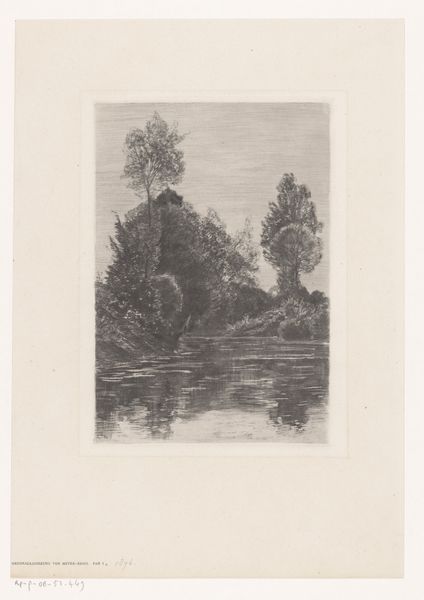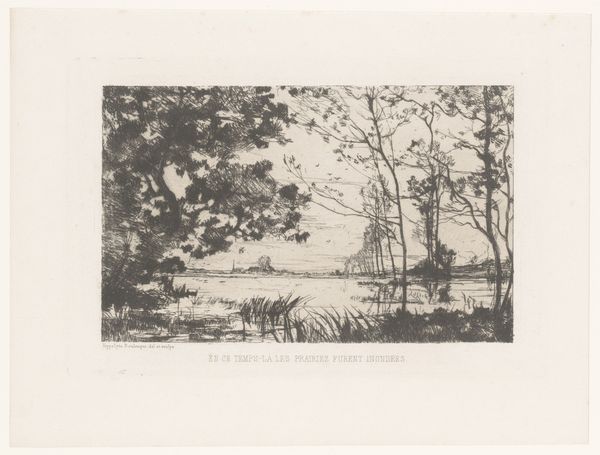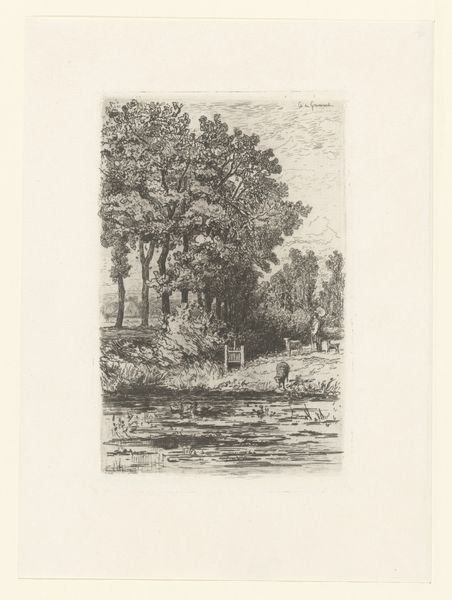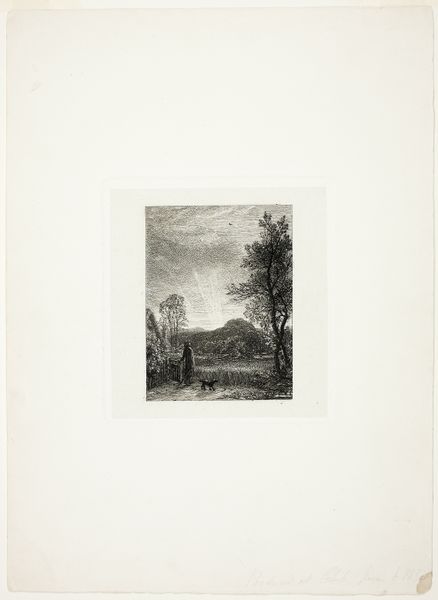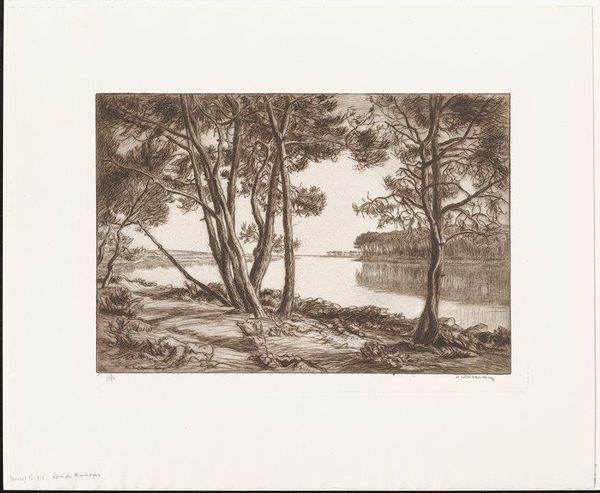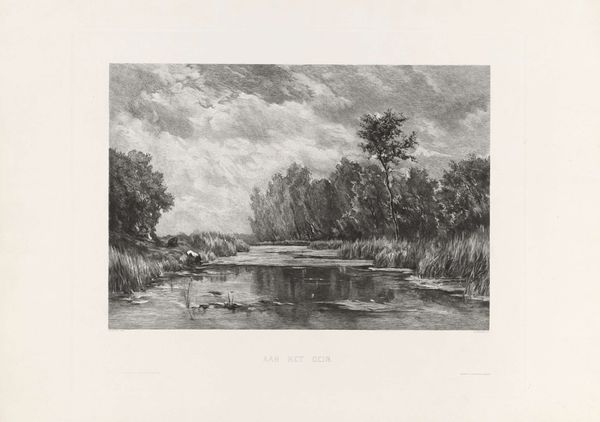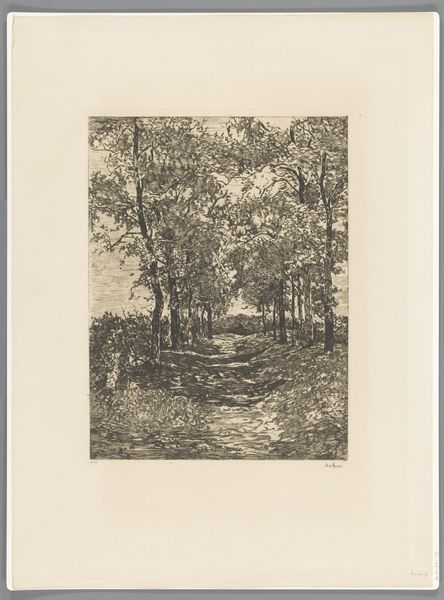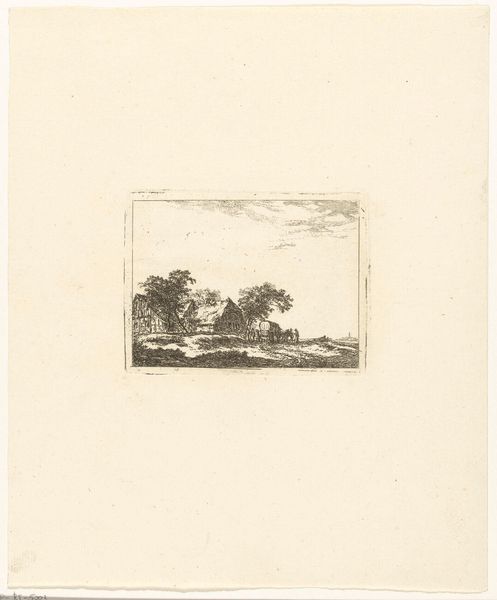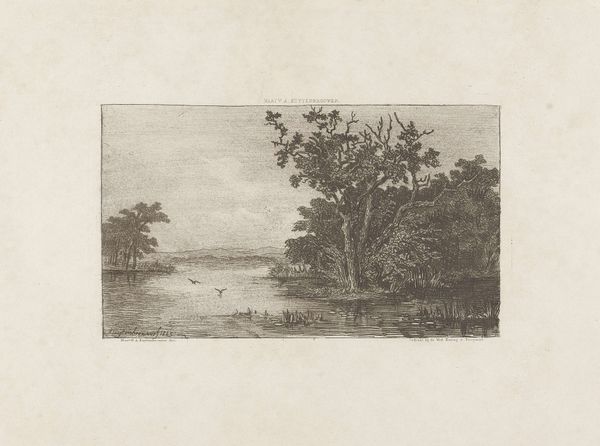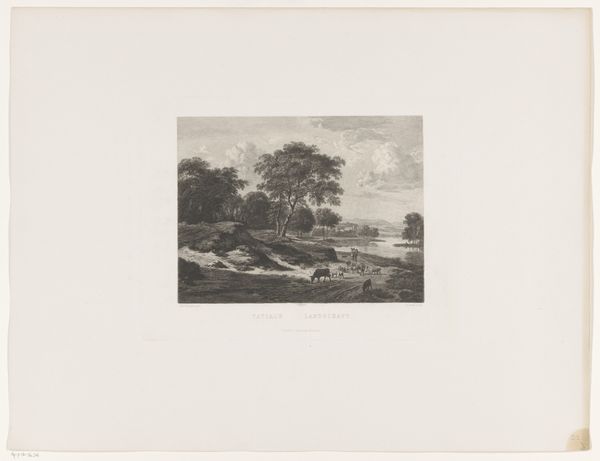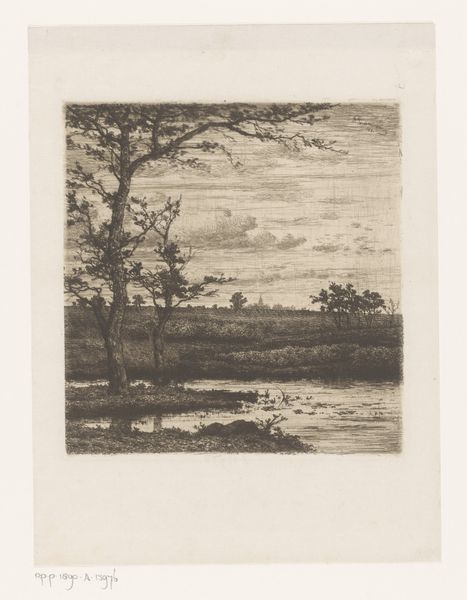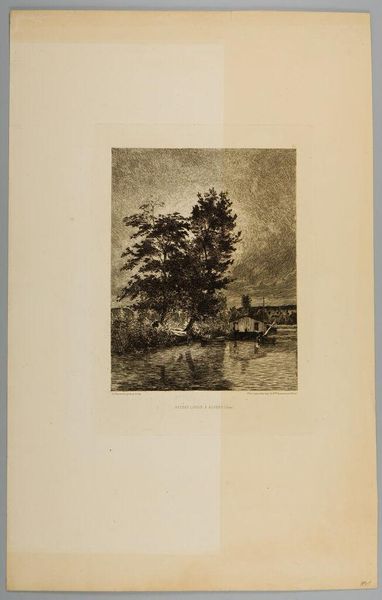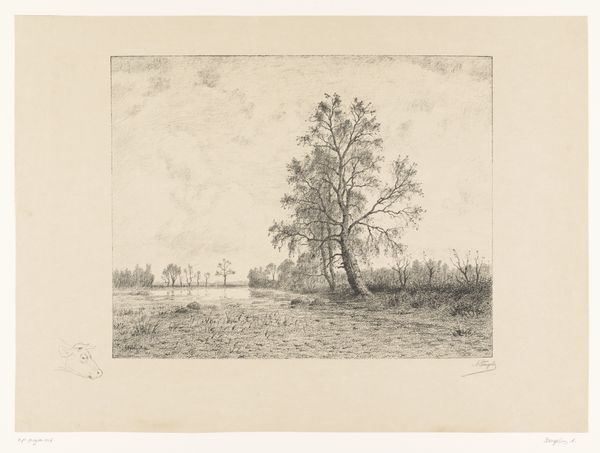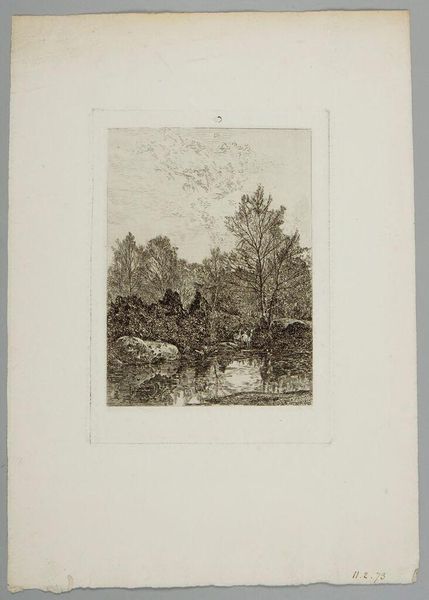
drawing, ink
#
drawing
#
landscape
#
river
#
natural colour palette
#
ink
#
realism
Dimensions: height 508 mm, width 332 mm
Copyright: Rijks Museum: Open Domain
Curator: Looking at this drawing, the tranquility is palpable. Editor: Yes, this work is titled "Zomerstemming," or "Summer Mood," by Johannes Walter, likely created between 1849 and 1895. It's rendered in ink, giving it that very precise, almost photographic quality despite the evident hand of the artist. The stillness, the detail in the reflections—it all adds to a sense of quietude. But tell me, what grabs you materially about it? Curator: I am particularly interested in the labour invested in creating such a finely detailed drawing, especially considering the historical context. Was Walter aiming for a picturesque ideal detached from the realities of labor in the countryside? Editor: It's easy to read this idyllic scene without acknowledging the societal structures at play. Walter gives us what appears to be an unassuming waterside dwelling. Consider what that location by the river may have meant: perhaps the occupants were deeply enmeshed in labor driven by water or intimately reliant on it for daily sustenance. Water, in and of itself, historically shapes communal interactions, roles, and, especially in agrarian contexts, livelihoods. Curator: Precisely! What appears idyllic can veil deeper socioeconomic relationships tied to natural resources and modes of production. I see that beautiful reflection of trees on the water—were such resources accessible to all? Were the materials required to capture it available to all artists? This leads us to important questions around access and power. Editor: Absolutely. Furthermore, how does Walter's artistic position – considering issues of gender, race, or class – shape his rendition of the scene and subsequently, our interpretation? Is the "summer mood" one shared by all who occupied similar spaces during that period? Whose labor enabled Walter to capture it at all? Curator: Exactly. I appreciate how we can appreciate the delicate lines of the ink drawing and at the same time question its role within broader systems. Editor: Agreed. Artworks such as "Zomerstemming" invite layered interpretations and dialogue that deepen our understanding. It’s the social context and artistic creation combined that make these objects truly speak to us, centuries later.
Comments
No comments
Be the first to comment and join the conversation on the ultimate creative platform.
